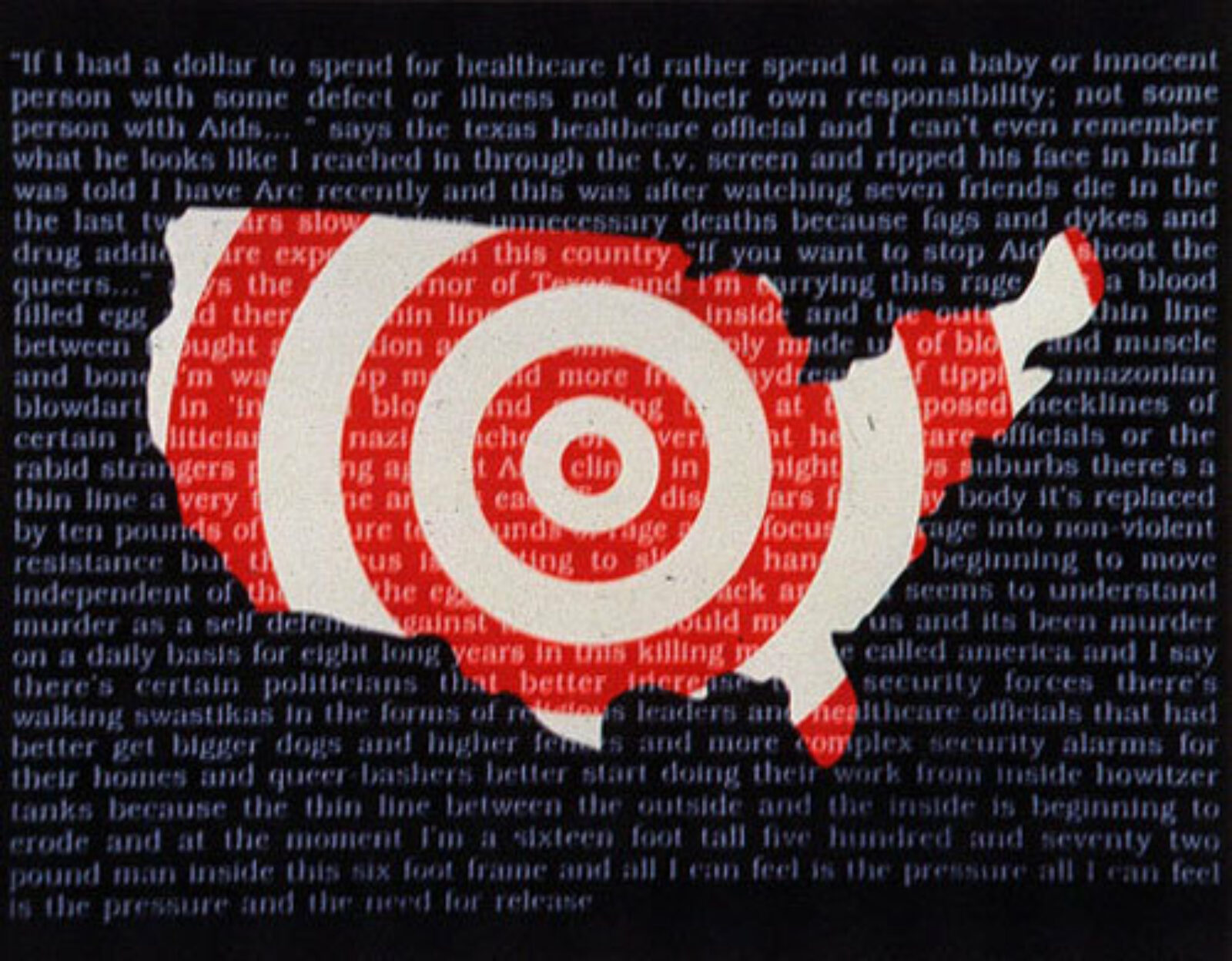



















featured gallery for July 2013
WAR
There was a tempest on the horizon, and anyone with eyes could see it coming. In those early days, before AIDS even had a name, there was no mistaking it. But how to give life to the violent fact of that moment, now that pharmaceutical interventions have blunted all memory of it? How in the world do you describe it?
As allegories go, war is troubling.
War is destructive, but never final.
War supports domination, but no one wins.
War is a lie. It enriches profiteers and steals from the rest of us.
And war is especially complex as a metaphor, particularly in the context of illness.
But I’m not speaking here about the eradication of disease. I'm talking about war. War waged against civilians. War, as a tear in the land. War as a political struggle, a holocaust, sprawling, in slow motion.
I saw it with my eyes, held its dead in my hands, watched the powerful jockey for its profits and pain. Language is needed to describe what I saw, and what it meant to be trapped in it.
The AIDS crisis was a war.
There are moments when war, or its name, is not a choice, and no matter how you feel about it, it can find its way to you. You may oppose it and still wake up on its battlefield, without ever leaving your bed. AIDS was this kind of killing field, and we were dragged onto it. It was war. And it was no metaphor.
It was a war, with its countless dead and hobbled survivors, its displaced and its homeless, its rotating caregivers, endless triage, rampant PTSD. War, with heroes, and midnight raids, headstones into the horizon for those who were loved enough, and being disposed of as medical waste if you weren't. War, and its blanket of death, silent as nerve gas.
Yes, war, with the brave holding trenches and the rest of us tearing bandages, selling the possessions of the lost to provide care for the dying. War, with spies and traitors, and enemies within, with prisoners, and the piling of bodies. War, with its call for camps, its funerals and wakes, memorials and graveyards, hospital stays and hospital visits, written wills and wills contested, with its widows and its destitute. War, with its long, dull devastation, with salt-stained ankles at an ocean of tears, the beating of breasts and the tearing of hair.
War, with underground railways smuggling medicine in and people out, with the sheltering of the wounded, with ad hoc agencies and citizen journalists, with improvised clinics and community-initiated research. War, with infiltrators and volunteers, networks of advocates, and lawyers, and proxies. War, and the thieving of resources, the begging for resources.
War. Because our government opposed our existence.
It was war.
When wars end — if we are fortunate — we return home, to the town square. After those terrible early days of AIDS, there was no such place. No outstretched arms, no place for communal meditation, no solace from the battlefield. No solace, except in the documentation of that moment, in the cultural production that was forced into being, the remaining symbols of that struggle.
So art, it turns out, is our commons.
Art is our town square.
Art that needs to be understood as the rage of this moment, a stand-in for the lost, the fading voice we need to cup our ears to. Those who were there, the living and the dead, need to be heard.
So picture it, if you can, when you look at this work.
Picture your friends and your family, sliding through your fingers, like sand.
Picture what it was like, those war years.
Of course, the war never actually ended. Not if you count the Berlin Wall between the HIV+ and the HIV-, which can only be dismantled by a cure, or the wall around treatment access. Or when you consider the relentless, silent skirmishes that are HIV criminalization cases, or the rising drumbeat of infections in the trans and young gay male communities.
But now that we've entered the Cold War, we like to say that it did. We like to say that the mark on the horizon has passed over us.
We like to say it has passed. But anyone with eyes can still see it. It just keeps shifting its location.
